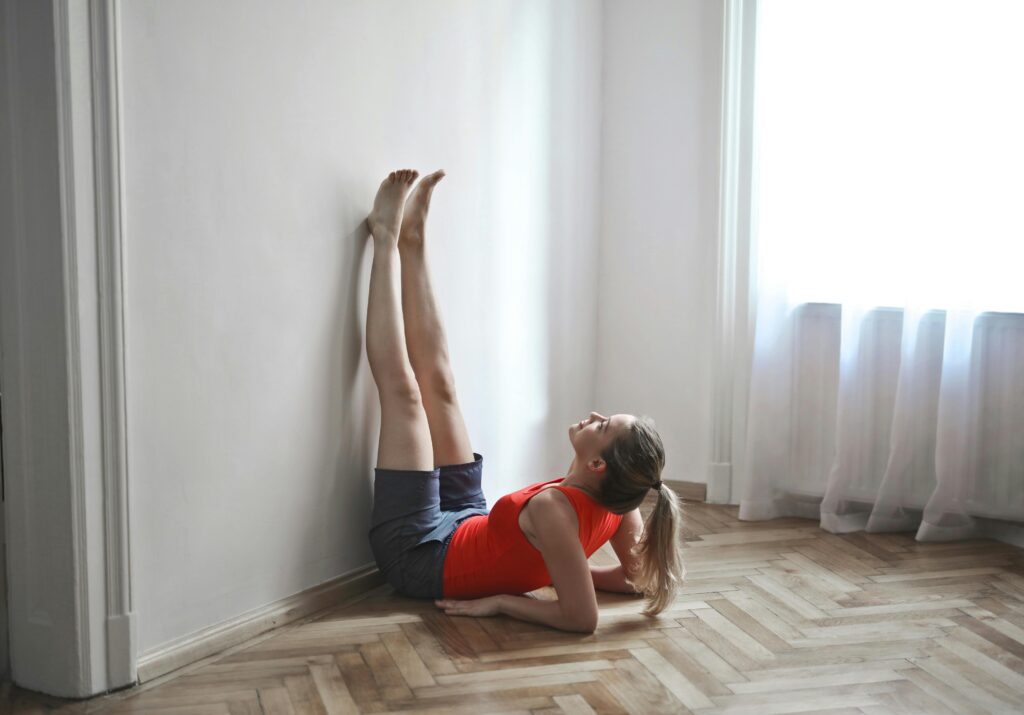Why Restorative Yoga and Better Sleep Go Hand in Hand
Picture this: You’re lying in bed, staring at the ceiling, mentally replaying that awkward thing you said three years ago at a dinner party. Your body is exhausted, your mind is running a marathon, and sleep is playing hard to get. Enter restorative yoga—the unsung hero of deep relaxation and the key to finally winning the battle against insomnia.
Restorative yoga and better sleep are a match made in heaven, like peanut butter and jelly, or binge-watching and snacks. If you’ve ever wished for a way to trick your body into actually feeling tired at bedtime (rather than at 3 PM in a meeting), restorative yoga is your answer.
What Exactly Is Restorative Yoga?
For the uninitiated, restorative yoga is a type of yoga that involves lying around in cozy, ridiculously comfortable positions for extended periods while using props like bolsters, blankets, and blocks to support your body. Essentially, it’s a socially acceptable way to nap in public. But don’t let the ease fool you—this practice works wonders for calming the nervous system, reducing stress, and, of course, improving sleep quality.
How Restorative Yoga and Better Sleep Are Linked
1. It Tells Your Nervous System to Chill
Restorative yoga activates the parasympathetic nervous system (aka the “rest and digest” mode), which is the opposite of the high-alert stress response most of us live in. When you spend time in poses that encourage deep relaxation, your body gets the memo that it’s safe to shut down for the night.
2. It Reduces Anxiety and Racing Thoughts
If your brain is anything like a 24-hour news channel of worries, restorative yoga helps turn down the volume. By focusing on slow, mindful breathing and supported postures, you can quiet the mental chatter that often keeps you tossing and turning.
Join Our Mailing List
Register now to get our hints and tips newsletter directly to your inbox
3. It Loosens Up Tight Muscles That Keep You Awake
Ever tried to sleep with a sore back or tense shoulders? Not fun. Restorative yoga helps release the tension stored in your muscles, making it easier to sink into a restful slumber.
4. It Encourages a Healthy Bedtime Routine
Scrolling through social media before bed? Bad idea. Doing restorative yoga before bed? Genius move. This practice trains your body to associate gentle movement with winding down, making it easier to transition from wakefulness to sleepiness.
The Best Restorative Yoga Poses for Better Sleep
1. Supported Child’s Pose
This pose is like a warm hug for your nervous system. Place a bolster under your torso, stretch your arms forward, and rest your forehead on the ground. Hold for 5–10 minutes while breathing deeply.
2. Legs Up the Wall
Ah, the ultimate lazy yoga pose. Lie on your back and extend your legs up a wall, letting the blood flow away from your feet. This pose is fantastic for calming the mind and reducing swelling in the legs.
3. Reclining Bound Angle Pose
Lie on your back, bring the soles of your feet together, and let your knees fall open. Use pillows under your knees if needed. This pose opens the hips and encourages full-body relaxation.
4. Supine Twist
Lying on your back, bring one knee across your body while keeping your shoulders on the ground. This gentle twist releases tension in the spine and preps your body for deep rest.
5. Savasana (Corpse Pose)
The grand finale of yoga and quite possibly the most beloved pose. Lie flat on your back, arms at your sides, and let go of all tension. This pose is where the magic of deep relaxation happens.
How to Incorporate Restorative Yoga into Your Nightly Routine
A well-crafted evening yoga routine can signal to your body that it’s time to shift into relaxation mode, helping you sleep more soundly and wake up feeling refreshed. Restorative yoga is designed to calm the nervous system, release deep-seated tension, and prepare you for a truly restful night. Below is a step-by-step guide to seamlessly integrate restorative yoga into your nightly routine.
Step 1: Set the Mood for Relaxation
Creating the right atmosphere is crucial for maximizing the calming effects of restorative yoga. Start by dimming the lights or using warm, soft lighting, such as Himalayan salt lamps or string lights, to create a cozy, peaceful ambiance. Light a candle or use an essential oil diffuser with soothing scents like lavender, chamomile, or sandalwood, which have been shown to promote relaxation. If you enjoy auditory relaxation, play gentle instrumental music, nature sounds, or binaural beats at a low volume to help shift your mind away from the day’s stresses.
To further enhance the setting, consider your yoga space. Choose a quiet, uncluttered area where you won’t be disturbed. A soft yoga mat, a few cushions, and a blanket can add to the sense of comfort. If possible, keep this space dedicated to relaxation practices to condition your mind to associate it with restfulness.
Step 2: Choose 3–5 Restorative Yoga Poses
Select a few gentle poses that allow you to fully relax while promoting deep breathing and nervous system regulation. Unlike active yoga styles, restorative yoga focuses on prolonged holds, typically between 5–10 minutes, using props like bolsters, pillows, or folded blankets to fully support your body.
Here are some excellent poses for nighttime relaxation:
- Legs-Up-The-Wall Pose (Viparita Karani) – Helps reduce swelling in the legs, calms the nervous system, and encourages circulation. Simply lie on your back with your legs resting against a wall, allowing gravity to do the work.
- Supported Child’s Pose (Balasana) – Opens the lower back and hips while encouraging deep diaphragmatic breathing. Place a bolster or pillow under your chest for added comfort.
- Reclining Bound Angle Pose (Supta Baddha Konasana) – A gentle hip opener that also fosters deep relaxation. Use cushions under your knees if needed.
- Supine Twist (Supta Matsyendrasana) – A soothing spinal twist that helps release tension from the back and shoulders, easing any lingering stress from the day.
- Savasana (Corpse Pose) with a Weighted Blanket – The ultimate relaxation pose, allowing the body to absorb the benefits of your practice while promoting a meditative state. A weighted blanket can add a grounding effect, reducing anxiety and improving sleep quality.
As you hold each pose, focus on slow, deep belly breathing. Inhale for a count of four, hold briefly, and exhale for a count of six or more to activate the parasympathetic nervous system, signaling relaxation.
Step 3: Eliminate Distractions
To fully reap the benefits of your restorative yoga session, minimize distractions. Place your phone on Do Not Disturb mode or, even better, keep it in another room. The blue light from screens can interfere with melatonin production, making it harder to fall asleep. If possible, let your household know this is your dedicated wind-down time.
You may also want to establish a boundary with your thoughts. If your mind starts racing, gently bring your focus back to your breath or use a simple mantra like “I release the day, I welcome rest.” The goal is to cultivate a state of mindfulness, allowing you to fully embrace the present moment.
Step 4: End with a Mindful Moment
Before heading to bed, take a moment to transition from your yoga practice to sleep with an intentional closing ritual. This could be a brief meditation, a gratitude practice, or a simple positive affirmation.
Some ideas to incorporate:
- Gratitude Reflection: Think of three things you’re grateful for from the day.
- Positive Affirmation: Say something kind to yourself, such as “I am at peace, and my body is ready for rest.”
- Breathing Exercise: Try a few rounds of 4-7-8 breathing (inhale for 4 seconds, hold for 7, exhale for 8) to deepen relaxation.
By making this practice a consistent part of your nightly routine, you create a powerful cue for your body and mind to unwind, leading to better sleep and improved overall well-being. Over time, this dedicated ritual will become second nature, helping you ease into restful slumber with more ease and grace.
Final Thoughts on Restorative Yoga and Better Sleep
If counting sheep isn’t cutting it, restorative yoga might be the dreamy solution you’ve been searching for. By embracing relaxation, reducing stress, and easing tension, this gentle practice paves the way for better sleep and brighter mornings. So, roll out your yoga mat, grab a bolster, and prepare to drift off into a world of deep, restorative rest. Sweet dreams!




